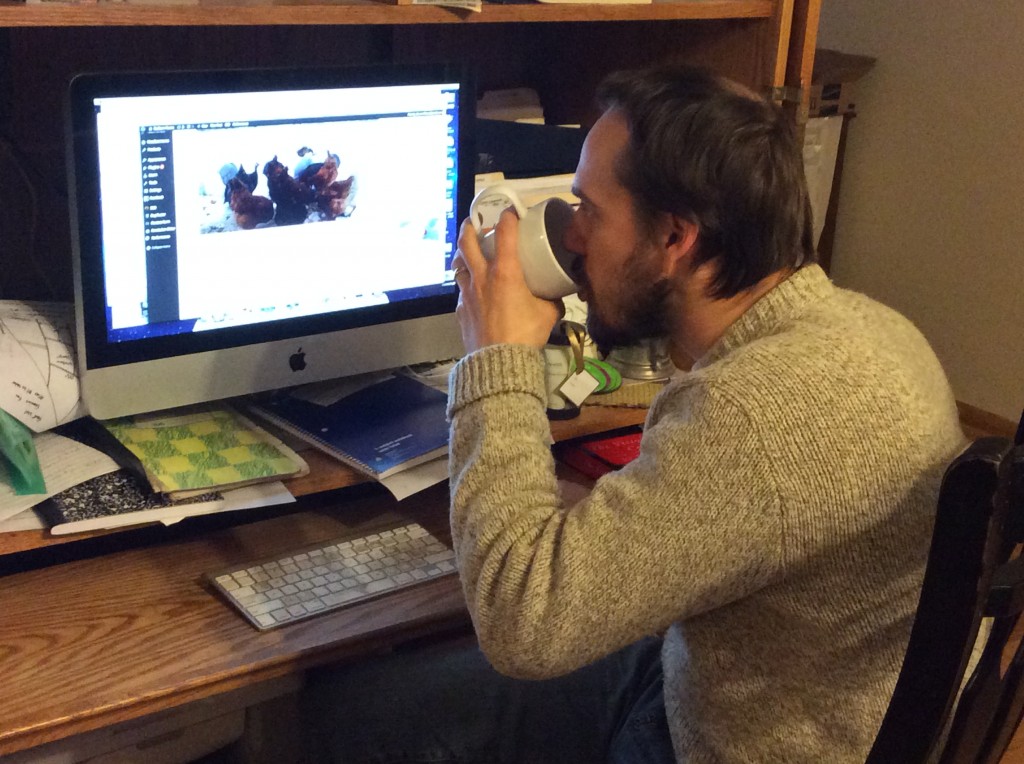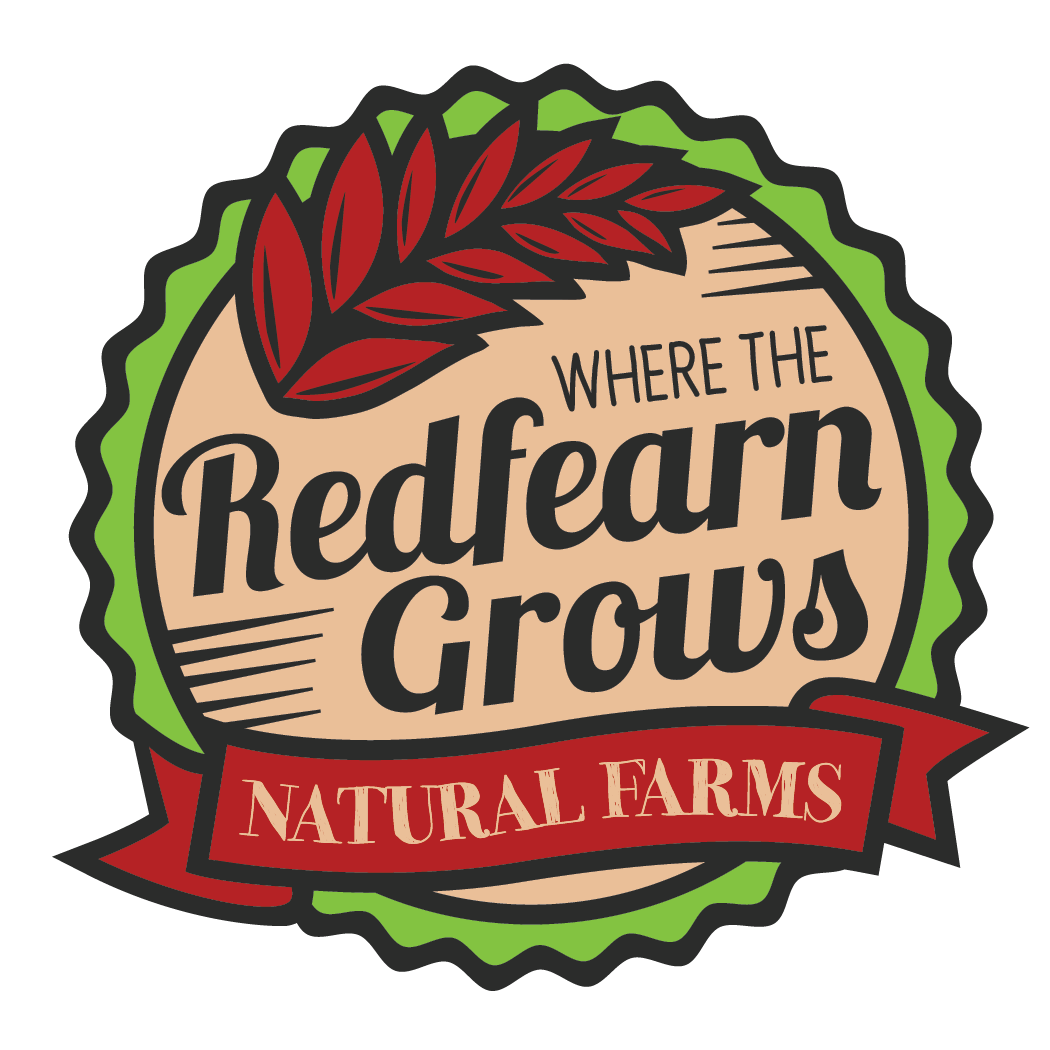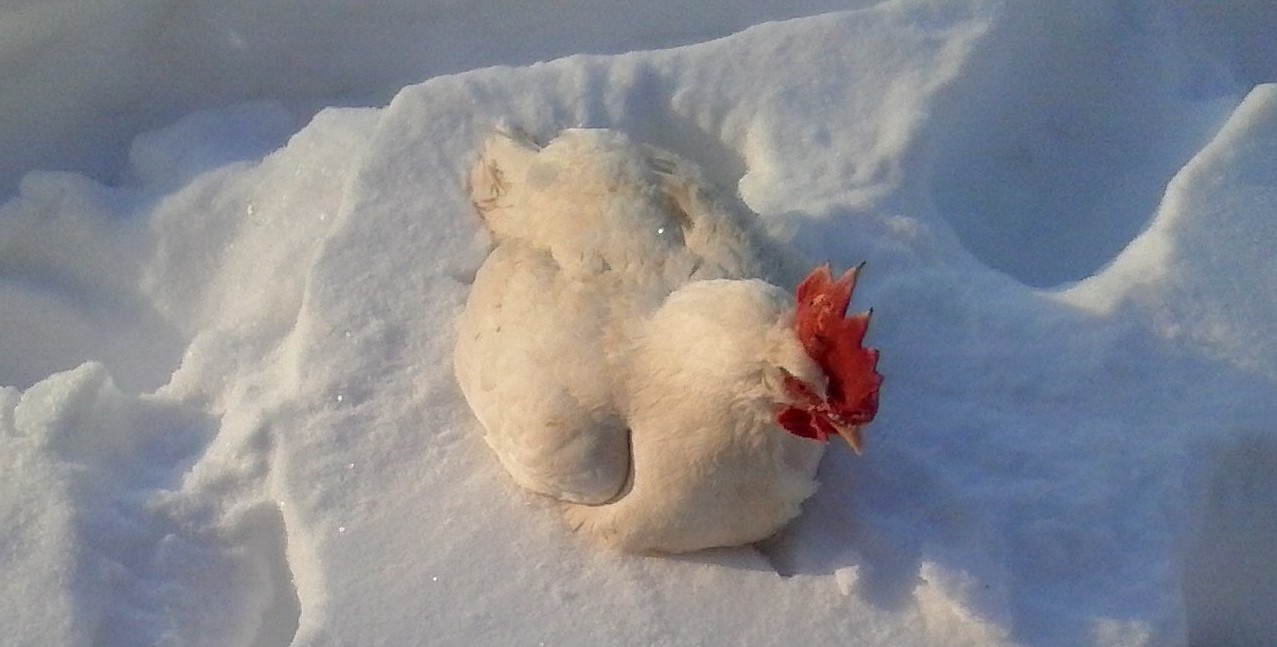22 degrees and snowing here in Independence, MO at Where the Redfearn Grows Natural Farms. It’s a perfect afternoon to curl up with a warm cup of coffee and read a book, but farm work must come first. We’ve got free range chickens, ducks, guinea hens, a goat and a couple dogs that need their afternoon feeding and watering. So before I can enjoy that cup of coffee, I have to go check on those animals. Thought you might want to see how they are doing too.
It’s been pretty cold lately (-10 degrees) in Kansas City and we had a foot of snow a couple days ago, so how are the animals doing? Well most animals are hardier than you might expect if they’ve grown accustomed to the cold and have somewhere to take shelter from the wind and water.
Boaz the Akbash livestock guardian dog who’s out protecting the goat, loves every minute of this winter wonderland. His 4″ + long coat keeps him very well insulated.
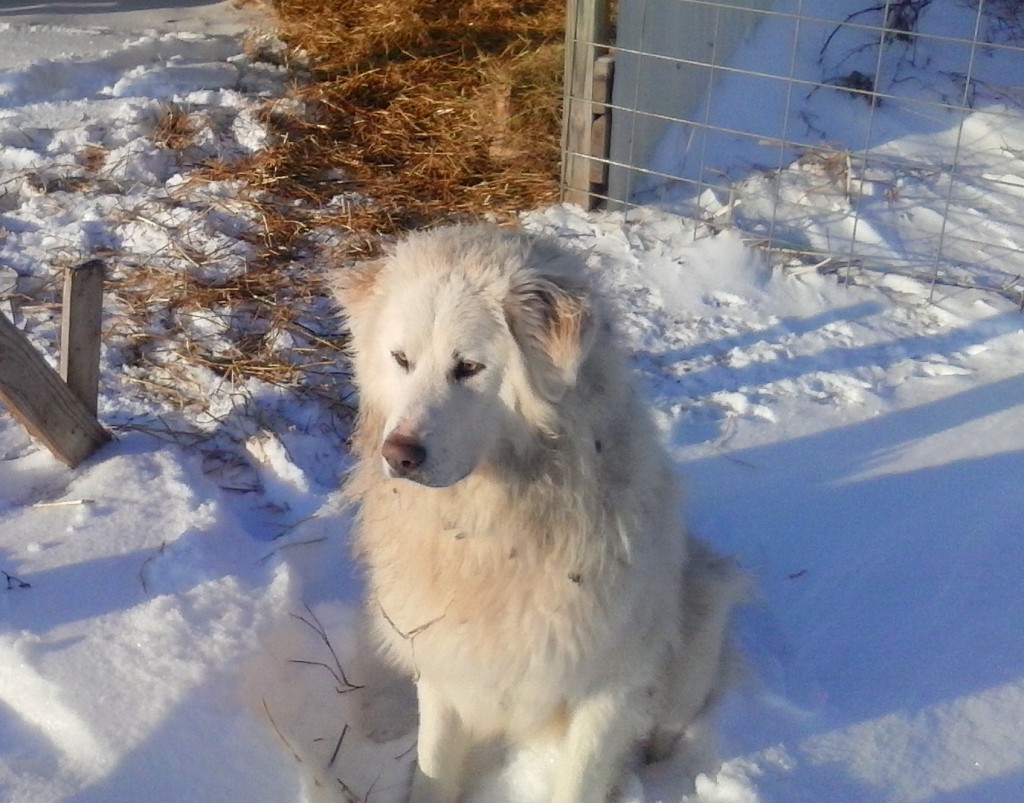
Caraway, the Lamancha milk goat doesn’t seem to mind when the two of them (goat and dog) cuddle up and sleep together on a thick layer of fresh straw. Below Caraway is enjoying some fresh hay. Saber the Black Lab in the background got to come inside a few nights. He’d probably be ok in his warm doghouse, but we’re growing soft I suppose. He did help himself to the cornbread on the counter the other night, so he’s certainly lacking inside dog manners.
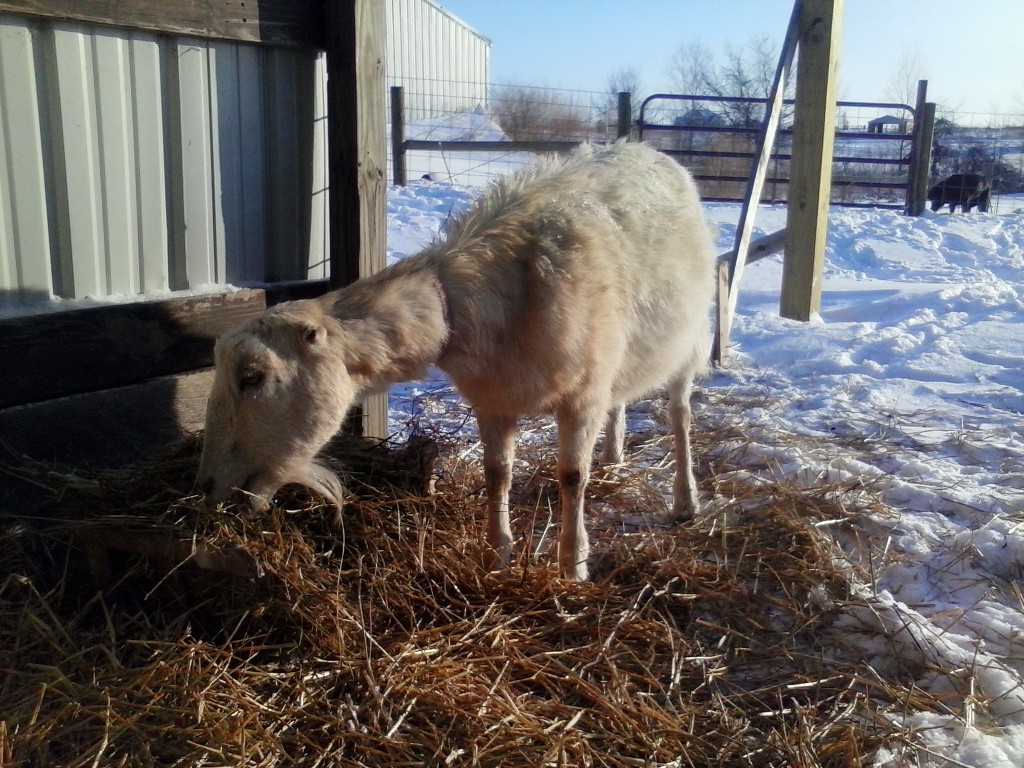
Before you accuse us of letting the ears freeze off our goat, the Lamancha breed is “earless” from birth. They just have those little stubby ears. Interestingly, since goats show dominance by head-butting and ear-biting (ask me how I know), Lamanchas have an unfair advantage, i.e. they can bite other goats ears without fear of retaliation, so Lamanchas end up being the bossy gals in the herd. At this point, we don’t have much of a herd, but she should be carrying twin goats due in April. We’d like to offer fresh goat milk and goat cheese someday, but we need to see how this goat milking thing goes this spring.
The ducks absolutely don’t care about the temperature. You’ll find them outside of their house in driving winds and snows when the wind chill is far below zero. Their thick plumage and insulating down along with the oils they apply makes them pretty impervious to wind and weather. Even in subzero temps they’ll take a swim in their drinking water–before it freezes that is. The extreme hardiness of ducks gives them great potential for small scale flocksters, as long as you can deal with the mess. We find chickens to be much cleaner than ducks.
The chickens aren’t quite so keen on the bad elements and tend to stay inside on snowy days enjoying the warmth of the heat lamp. They’ll come out running when our kitchen scraps are laid out for them, though. Since we raise free range chickens for eggs, our chickens forage for most of their food throughout the growing season, but in winter under snow cover bugs and greens are scarce so theirs not much to find except the purchased chicken feed and our kitchen scraps. Boy they LOVE leftover oatmeal!
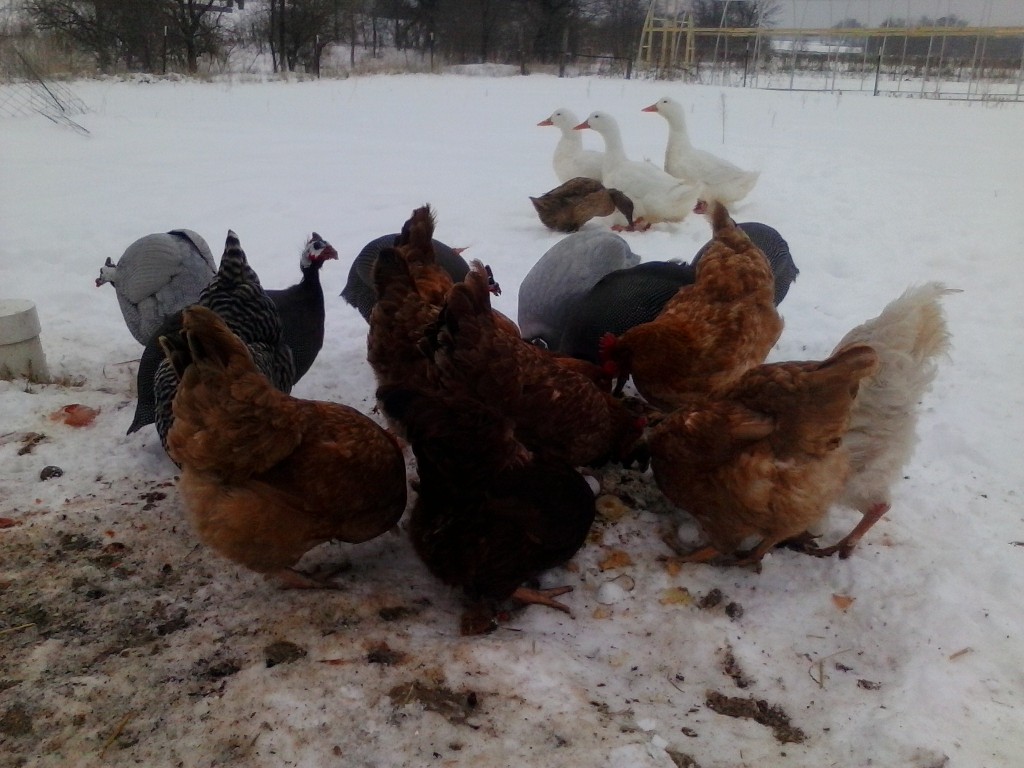
Well, all the animals are fed and doing fine, so I think it’s time for that warm cup of coffee!
